Intel 14th-gen Meteor Lake: news, rumors, release date speculation
Intel's 14-gen Meteor Lake processors are coming soon, and we're starting to get details. Here are all the news, rumors, and leaks we've seen so far.
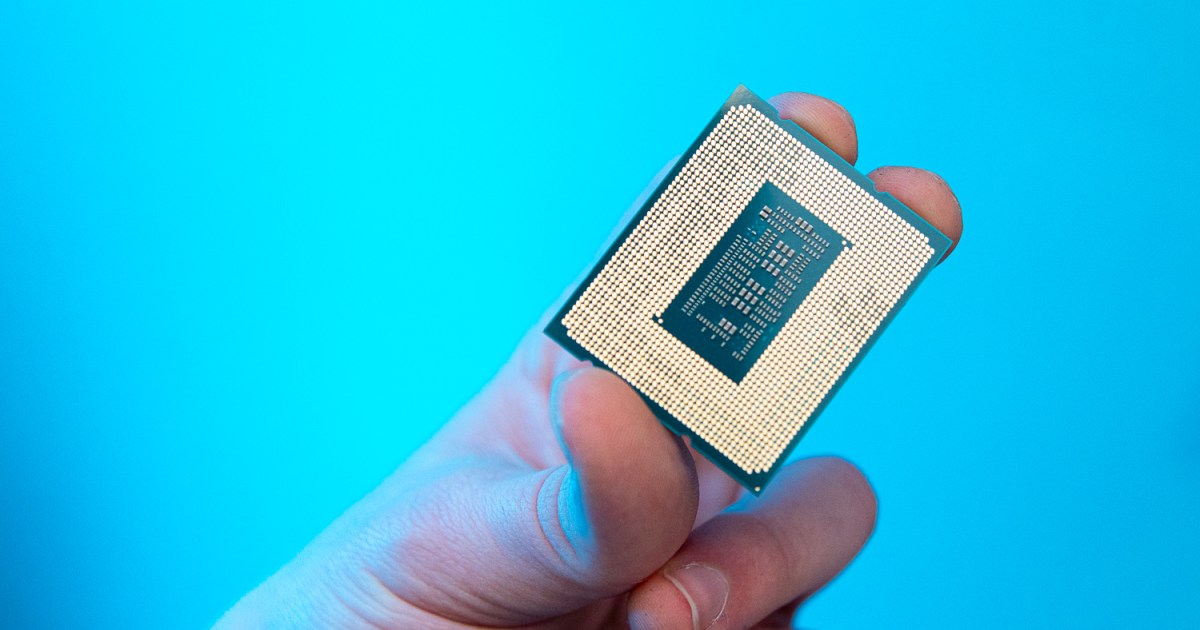
Intel is continuing to push out new CPU generations, and in 2023, we might see the launch of 14th-generation Meteor Lake processors. We don’t know much about these CPUs right now, but a slew of leaks and rumors provide a glimpse at a potential release date, specs, and above all else, performance.
The battle to release the best processor is more heated than it has ever been, and Meteor Lake is an inflection point for Intel. With a new approach to designing CPUs, Meteor Lake might start a comeback for Intel as it tries to keep up with Apple and continues trying to outpace AMD.
It’s too soon to say right now, though. In the meantime, here’s everything we know about Intel’s 14th-gen Meteor Lake processors.
Pricing and release date

Intel hasn’t announced a release date for its Meteor Lake processors, but they should arrive in 2023, which is the time frame Intel announced when it first revealed Meteor Lake processors and laid out a road map for when the chips would enter production. However, the latest scoop implies that Intel’s initial road map may have been majorly derailed.
A rumor from YouTuber Moore’s Law Is Dead implies that the Meteor Lake chips will begin rolling out in October 2023, with a 14-core laptop CPU being the one to lead the charge. If this proves to be true, it would be quite a shake-up compared to previous generations. Intel usually starts out by launching desktop processors, so to see a mobile chip being the first to be released is odd, to say the least.
In fact, several leakers claim that the Intel Meteor Lake-S (desktop) lineup might be in trouble. Frequent Twitter tipster OneRaichu shared a cryptic tweet in late 2022, and Moore’s Law Is Dead seems in agreement that the range might be canceled for now.
If this checks out, it doesn’t have to mean that Intel won’t launch anything in 2023. Instead, it might release a refresh of Raptor Lake and push back Meteor Lake by another year, but many signs point to it being scrapped entirely. If that happens, Intel might launch Meteor Lake for laptops alongside a Raptor Lake refresh for desktops, and it will skip right to Arrow Lake for its next-gen desktop chips.
 Intel / Hardware Times
Intel / Hardware TimesHardware Times shared what looks to be an official Intel slide that seems to confirm the whispers about Meteor Lake for desktops being canceled. The updated road map reveals that Intel might only be planning to launch Raptor Lake-S processors in 2023; all mentions of Meteor Lake seem to have been scrapped. However, all this is just a speculative timeline right now, as Intel hasn’t confirmed any release date outside of the year, and it hasn’t commented on these cancellation rumors.
As far as pricing, it’s tough to say. The current generation of Intel processors ranges from around $100 for the cheapest model to over $650 for the most expensive. We don’t anticipate large price changes for Meteor Lake, but the cost mainly comes down to where the rivalry between AMD and Intel is at when Meteor Lake CPUs are ready to launch.
Intel has confirmed Meteor Lake CPUs will carry new branding. The company is ditching “i” it used for over 15 years and replacing it with “Core Ultra” branding.
Specs
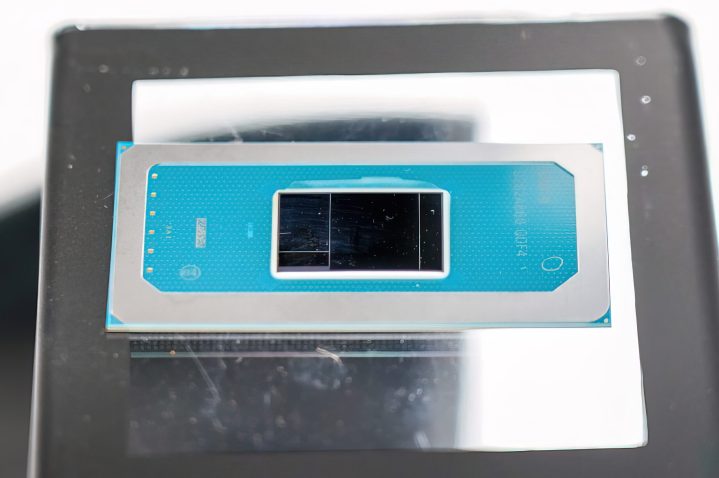 Wccftech
WccftechWe haven’t seen any leaked specs for Meteor Lake processors yet, and that makes sense. While Intel has already launched a whole slew of Raptor Lake CPUs, preproduction Meteor Lake chips haven’t started showing up in leaked benchmarks yet. The biggest news we have comes from a Meteor Lake leak that revealed loose specs around the mobile processors.
The leak shows U, P, and H variants of mobile Meteor Lake processors, which is par for the course with Intel. U-series processors are usually 15 watts and under, P-series are 28W, and H series are 45W, but it’s possible Intel could change the power ranges.
More interesting, the leak showed that mobile Meteor Lake processors will top out at 14 cores split across six performance cores and eight efficient cores. It also confirmed that the generation will support DDR5 and LPDDR5, as well as PCIe 5.0, which are all platform features Intel currently supports. It also looks like Intel might drop support for DDR4 altogether with Meteor Lake.
While Intel has been pushing hard for increased core counts in the past few generations, this practice may be coming to an end. Rumor has it that Intel may limit the number of P-cores on the future flagship, the Core i9-14900K, to six. That would make six P-cores and 16 E-cores, for a total of 22 cores.
Anonymous sources cited by Moore’s Law Is Dead seem to imply that Intel might be shifting away from these high core counts and favoring a more balanced power draw instead. It’s hard to say how this will impact the specifications and performance of Meteor Lake, though, if it’s even true.
Architecture
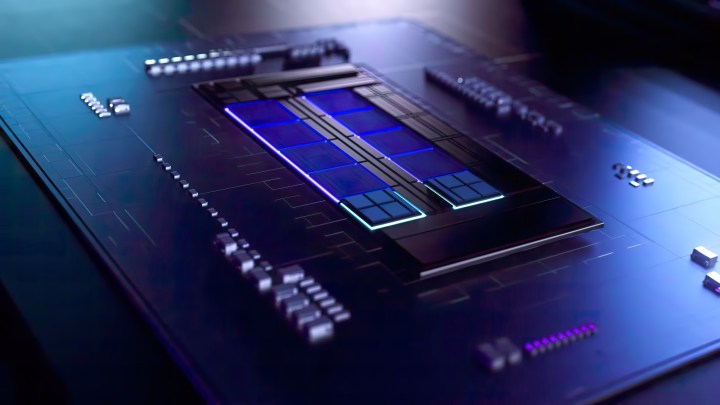 Wccftech
WccftechArchitecture is where we have the most news on Meteor Lake processors. This is the generation where Intel plans to bring its road map together, unifying several dies from multiple vendors while still taking advantage of a hybrid architecture.
The CPU itself is built on the Intel 4 process, and Meteor Lake will be the first to feature this node (following Intel 7 on Alder Lake and Meteor Lake). What’s more interesting is how Intel is changing the design to compete with Apple processors. In addition to the main compute die, Meteor Lake also has separate GPU, IO, and system-on-a-chip (SoC) dies.
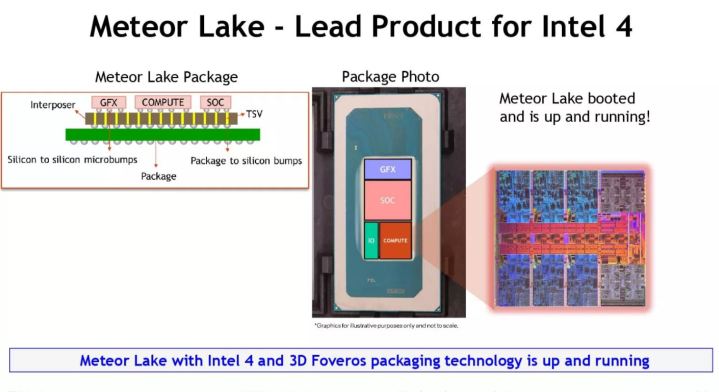 Intel
IntelIntel hasn’t confirmed which node it will use for these dies, but it should come from chipmaker TSMC, which is behind most of the nodes inside processors and GPUs today. Intel will also look to tap the Taiwanese manufacturer to help with some dies on Meteor Lake CPUs. Intel is still handling the design, but TSMC could make part of these processors.
Competing with Apple seems like Intel’s goal, as it wants to provide not just a CPU, but an entire computer on a chip (similar to Apple’s M-series processors). This is enabled by Intel Foveros, which is a multi-die packaging technology that Intel has been chipping away at for years.
This approach could help Intel push more efficient CPUs with a larger set of features. It could also make Meteor Lake tough to execute, though. With so many dies, Meteor Lake seems vulnerable to delays and manufacturing mishaps, but we’ll have to wait until later in 2023 to see the state of the 14th-gen CPUs.
For cores, Intel is said to be using new Redwood Cove cores for performance and Crestmont cores for efficiency. Just like the previous two generations, Intel is combining two different core types in the compute die to provide large numbers of cores without the increased power draw associated with them. Crestmont cores are said to be an up to 15% improvement in instructions per cycle (IPC) compared to last-gen Gracemont, and Redwood Cove may offer as much as a 25% IPC uplift compared to Raptor Cove.
Outside of the compute die, we don’t know much. Intel is using its Arc GPU architecture for the graphics tile, but it’s not clear if that tile will use current-gen Arc Alchemist or next-gen Arc Battlemage. Given Arc’s previous issues with delays and drivers bugs, Intel may stick with the familiar architecture to avoid any widespread issues. Leaked benchmarks show this integrated GPU can rival some discrete graphics cards, even.
In addition to CPU and GPU tiles, each Meteor Lake processor will have a dedicated AI processor, called a VPU. Intel says these processors are 10 times more powerful when it comes to AI work compared to the CPU, and they use only a fifth of the power. Intel’s VPU isn’t new, but this is the first time it’s being included across the product stack.
Performance
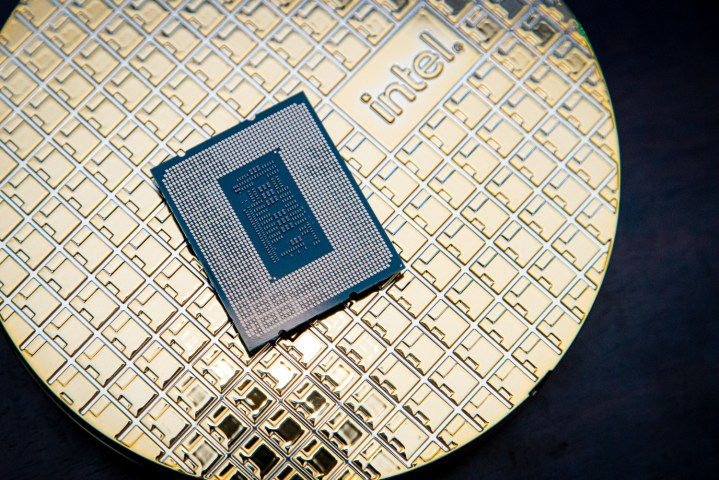 Jacob Roach / Digital Trends
Jacob Roach / Digital TrendsWe don’t have any leaked benchmarks for Meteor Lake, much less performance numbers from Intel itself. The biggest hints right now all relate to the Intel 4 manufacturing process, which Intel teased delivers 21.5% higher frequencies than the previous node at the same power or a 40% power reduction at the same frequency.
Higher frequency doesn’t inherently mean a better-performing processor. Frequency seems like a push for Intel, though, so it could help with 14th-gen chips. Intel Raptor Lake’s ultimate flagship, the Core i9-13900KS, can hit 6GHz without even being overclocked. Chips lower down the line can be tuned to reach that frequency too. It’s possible that the 14th-gen flagship will push those numbers higher still.
Regardless, we shouldn’t draw any performance conclusions now. Meteor Lake is a completely different beast than Raptor Lake, and we’re still likely several months away from any kind of launch.
A new socket
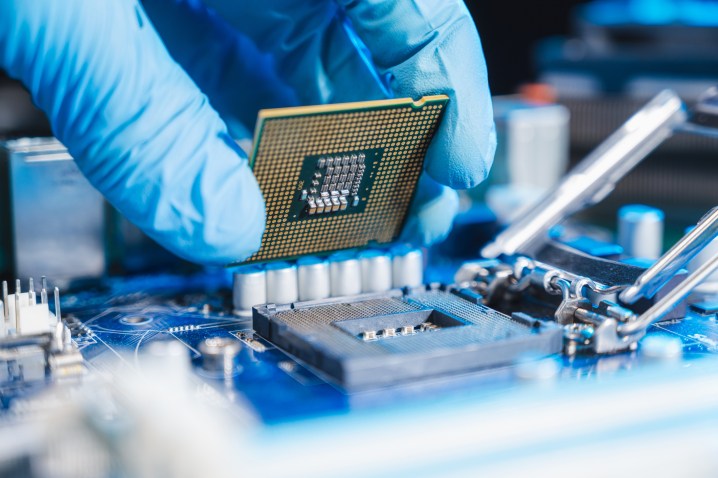 Narumon Bowonkitwanchai/Getty Images
Narumon Bowonkitwanchai/Getty ImagesRumors say Intel will introduce a new socket with Meteor Lake. Current-gen CPUs use the LGA 1700 socket, but the rumor mill suggests Intel will use an LGA 1851 socket for Meteor Lake. That means new motherboards and possibly new platform features, but we don’t have any details surrounding those yet.
Given how similar the designs are, it’s possible that CPU coolers that are currently compatible with Alder Lake processors will work with Meteor Lake as well. We don’t have any confirmation on that, but it’s possible.

 Koichiko
Koichiko 
































